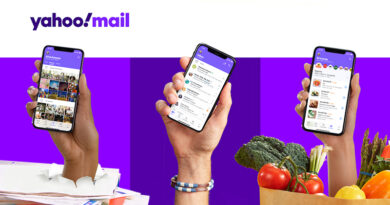Why Your Business Need to ‘Go Mobile’
Everywhere you go, people are attached to their mobile devices. And they aren’t just phones anymore; today’s mobile phones are more like portable computers, with operating systems, Wi-Fi, 4G, and a huge variety of apps.
In this article, we’ll give you a glimpse of what is possible when you decide to go mobile with your business and marketing. You’ll learn a bit about the basics of mobile marketing, why it’s important to have a mobile website, and how you can use a mobile website as an effective business and marketing tool.
The goal of this article is to help you to get your business on mobile quickly, easily, and effectively. We’ll give you an overview of mobile marketing and how it can affect your business, along with the rationale behind taking your business and marketing to the mobile platform.
In addition, you’ll learn about some of the differences between traditional and mobile websites, and we’ll give you some great tips for setting your mobile website apart and making sure you get lots of traffic from mobile users.
People check their mobile devices dozens of times a day, so it just makes good sense to get your business in on the non-stop action by going mobile. Let’s get started and get your mobile today!
What is Mobile Marketing?
Mobile Marketing is simply marketing your products or services on mobile devices. The number of mobile-connected devices now exceeds the number of people on earth. To put that into perspective, the current worldwide population is just over 7.3 billion people.
In short, mobile marketing is not the wave of the future; it has already arrived! It is an extension of internet marketing, and because almost everyone has a mobile device with them every day, your business can reach even more potential clients or customers when you embrace mobile marketing.
Go to a mall, college campus, or airport and take a look around. Virtually everyone is using a mobile device of some sort, and most of them are not just using them to talk on the phone.
They are surfing the web, making purchases, booking reservations, and finding what they need and want. With options like SMS, apps, MMS, and QR codes, the possibilities of mobile marketing are endless. The daily use of mobile devices has outstripped the use of PC’s, so it is essential that a growing business get on board.
Why Mobile Marketing?
You may be saying to yourself, “I’ve got a great website, I send out regular emails, I even have a blog. Why is mobile so important, and what can it do for me that I am not already doing?” Here are just a few things to consider when asking why mobile?
- People are emotionally attached to their phones
When was the last time you went to work or out for an evening and realized you had forgotten your phone? We feel connected to our phones and with our phones. Because the vast majority of your potential customers or clients are probably carrying a mobile device in their purses or pockets, it just makes sense to capitalize on that always-available mobile connection.
- Mobile marketing is cheaper than other types of advertising
This is an especially important consideration for the small to medium business. Considering the proliferation of mobile devices, mobile marketing casts a wide net that no other medium can.
Your target consumers do not have to be sitting at a computer, listening to a radio, or watching television. You can reach them while they are jogging, waiting in line, eating out, or even lying on the beach. It’s a fact that Mobile Marketing makes you more accessible to your customers.
What is a Mobile Website?
A Mobile Website is the new online home for your business on Mobile Devices. It provides your business with a public identity on mobile phones, and it’s where you connect with customers, develop your brand, and engage your following with the other half of the audience you can’t reach using the regular communication channels.
Most businesses have a website these days; it is part of the basic marketing and function strategy. So if I already have a website, why do I need a mobile website? Does it really matter if my current PC website and my mobile site are the same?
Here are a few things to consider about the differences between viewing a website on a PC and viewing it on a mobile device:
-
The screen size
The typical laptop or PC screen can be anywhere from 13-17 inches, or even larger depending upon the model. This means there is plenty of room for great graphics and lots of text, and because of the screen size, using the typical 12-point font is usually no problem.
Pull up your favorite website right now, and you’ll see what we mean. Now, go to that same site on your mobile phone. The graphics are smaller, or they take over the screen. You may have to scroll up, down, and side-to-side in order to see everything. And that text that was easy to read on a laptop is tiny on your mobile device screen.
-
Hyperlinks and Actions
This is closely related to screen size. If you look at the icons on a smartphone, or even the letters on a touchscreen keyboard, they are usually about the size of a fingertip. This is because if they are too small, accurately pressing the correct letter or icon would be difficult.
If you are using a traditional website on a mobile device, then small size of buttons, hyperlinks, and icons make it very difficult to use. Sure, most phones allow you to expand the screen, but then the customer has to go looking for the hyperlink by scrolling until they find it. Chances are, they will grow frustrated and opt for a site that is easier to see and use.
-
Everything at a Glance
Because mobile websites are designed to show information efficiently on a smaller screen, most of them are designed to have an easily accessible index. Sometimes this is the landing page of the site, and sometimes it comes in the form of a drop-down screen or box. Either way, it makes it easy for your customers or clients to locate the part of your site they need to access.
When you visit a mobile-friendly site everything on the mobile site is right at your fingertips. However, if you visit a site design that is not reader friendly on a phone, the site is much harder to read. A potential customer would likely grow frustrated trying to navigate the site a non-mobile site and leave but they will be more likely to stay and more importantly buy if they are on a mobile-friendly site.
Tips to Get Your Mobile Website Moving
- Know your target audience. Don’t assume that all of your audience has the same type of phone or even a smartphone, but create your site with the largest possible target base in mind.
- Keep the core of your content the same. Though the appearance and configuration of the two site styles may differ, the core content and organization of the content should be as similar as possible. For example, if your PC site’s menu is organized by products and services, about, and contact us, this should also be the organization of your mobile website. If at all possible, if you can do it on the desktop site, you should be able to do it on the mobile site.
- Take a look at the Mobile Marketing Association. This organization can help you keep up to date on current trends, regulations, and programs to make the most of your mobile website.
- Keep it user-friendly, Navigation should be simple. Content should be delivered quickly. Bells and whistles are great, but not at the expensive of fast, easy to access content.
- Fewer pages mean less download time. It is best to keep a mobile website as streamlined as possible, with no more than two or three layers.
- Take advantage of redirects. You’ve probably typed in a web address on your phone before and been pleasantly surprised that it intuitively took you to the mobile site. This will save your potential customers or client’s time, so take advantage of redirects that will sense when your visitors are using mobile devices.
- Don’t forget the full site. No matter how similar the content, there are some things that are on your full site that you just won’t be able to get onto the mobile site. So make sure your users have the option of going to the full site if they want to do so.
- Sound Bites will get your customers to bite. Make your text brief and catchy. Use slogans, short phrases, and bullet points instead of narrative text.
- Promote your mobile site using all of your already-in-place marketing resources. Once your mobile site is up and running, let your Facebook followers, Twitter followers, email subscribers, and PC website users know it’s out there.
- Pull in the consumer. Paying attention to details such as readable font, complementary colors, and images that reflect your site’s mission and services will grab attention and make your site aesthetically pleasing. Avoid clashing colors and fancy fonts that are hard to read. Clean, complementary, and captivating should be the keywords that guide design.
Now Is The Time to Take Action
Mobile marketing has now overtaken fixed internet access, according to Mobile Marketing Analytics. Consider that a sale coming from mobile phones on eBay happens every 2 seconds, and smartphone sales have overtaken PC sales.
Knowing how to optimize your business’ mobile marketing can make a huge impact on your visibility, profits, and success. And the growth of mobile use is happening faster than any other technology growth thus far. It took 38 years for the number of radio users to reach 50 million and 13 years for the number of television user to climb that high.
Even the number of internet users didn’t reach 50 million for 4 years. However, the Draw Something phone app only took 50 days. The time to take your business mobile is now!
We hope you have found this introduction to the mobile website informative and helpful. Our business is to help your business grow and succeed through every possible venue, including mobile marketing. It’s time to take advantage of this technology that is already at the fingertips of billions. Contact us today to find out how we can transform your online presence and generate more business for you.



Today’s generation more likely to mobile friendly, they want everything in their cells
Yeah, Correct!
For businesses across all industries, mobile tech has provided new and innovative ways to engage with employees, boost productivity and cut the cost of operating in an increasingly competitive world.
Mobile Marketing is simply marketing your products or services on mobile devices.
Mobile marketing has a much lower CPM (cost per thousand) than other traditional marketing channels.
Pingback: ciprofloxacin virus
Pingback: ed pills that really work
Pingback: buy pfizer viagra online
Pingback: buy hydroxychloroquine online
Pingback: order viagra online
Pingback: buy viagra no prescription
Pingback: cialistodo.com